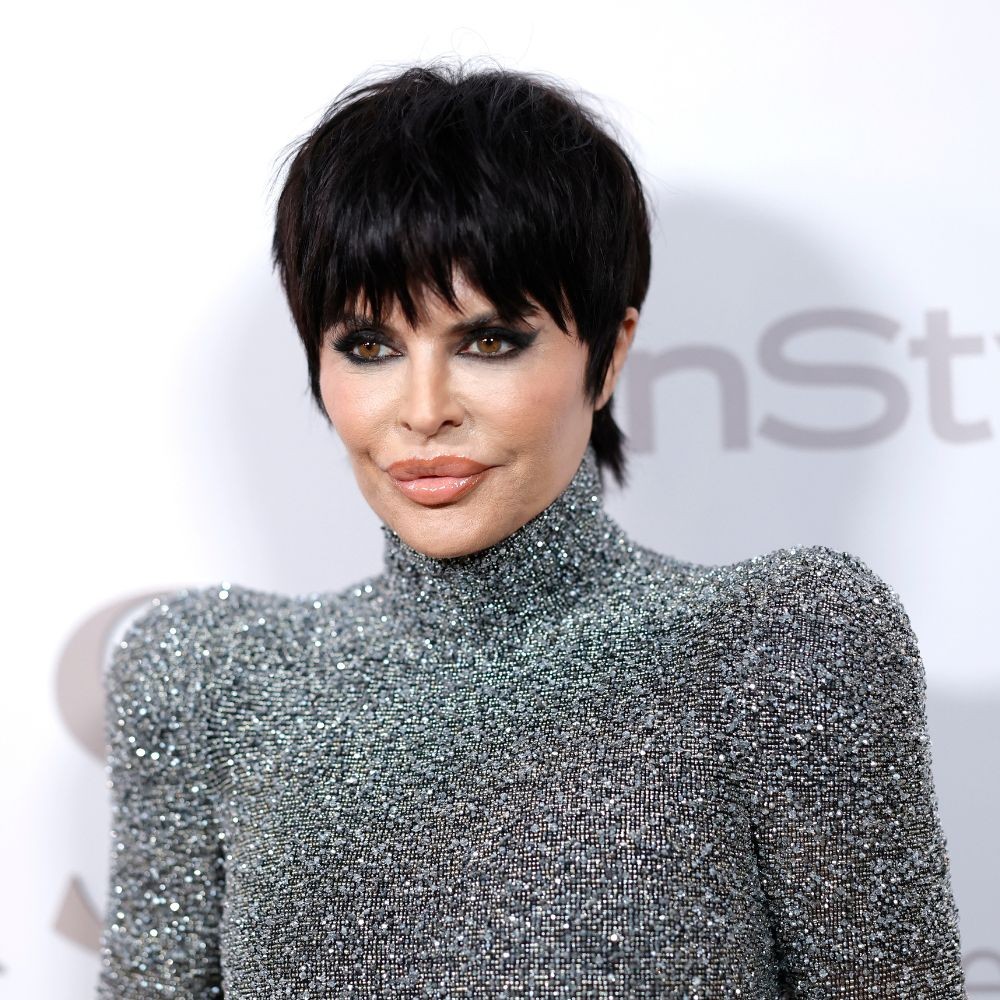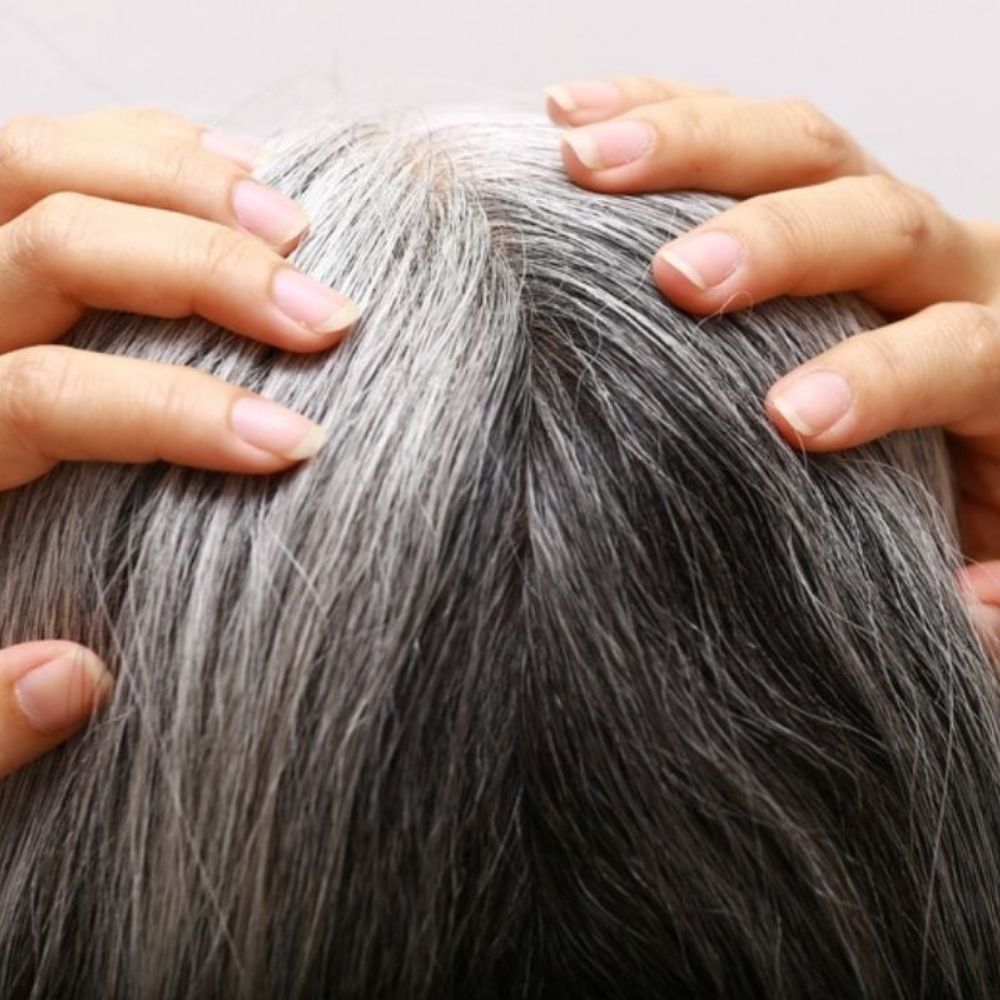Signs of New Hair Growth: A Promising Mane-ifestation
One important aspect of proper hair care is understanding signs of hair growth and managing accordingly. In this article, we shall explore the hair growth signs.

Understanding the signs of new hair growth can help you in your quest for hair maintenance. There are several signs that can indicate new hair growth. Let's begin with what those signs can be, starting with itching or tingling sensations on the scalp, followed by small bumps on the scalp, thin and soft hair, changes in hair texture, shedding, and hair growth along the hairline . However, it's important to understand that new hair growth isn't some overnight miracle or magic. The speed and rate of new hair growth may vary and also depends on several factors like genetics, aging, health, and lifestyle. The signs that hair is growing can occur at different stages of the hair regrowth process. Let us learn them.
What are the Stages of Hair Growth?
The process of new hair growth is a complex and continuous cycle that consists of three main stages: anagen, catagen, and telogen (1). These stages collectively make up the hair growth cycle, which repeats itself throughout our lives. Understanding the stages of hair growth may provide helpful insight into the natural progression of hair and help us better comprehend the factors that influence its health and appearance.
1. Anagen Phase:
The anagen phase is the active growth phase of hair follicles. It is during this stage that hair cells divide and multiply, leading to hair strand formation. The duration of the anagen phase varies from person to person and is primarily determined by genetics. On average, this phase lasts between two to seven years, during which the hair grows approximately half an inch (1.25 centimeters)per month. People with longer anagen phases tend to have longer hair (1) .
2. Catagen Phase:
After the anagen phase, the hair follicles transition into the catagen phase, also known as the transitional phase. This stage is relatively short, lasting for about two to three weeks. During catagen, the hair follicles begin to shrink and detach from the blood supply. The hair shaft stops growing, and the lower part of the follicle forms a club-shaped structure. Only a small percentage of hair follicles are in the catagen phase at any given time (1)
3. Telogen Phase:
The telogen phase, also referred to as the resting phase, is the final stage of the hair growth cycle. It typically lasts for about two to three months. During this phase, the hair follicles remain inactive, and the hair shaft is fully formed but not actively growing. Approximately 10-15% of hair follicles are in the telogen phase at any given time. After the telogen phase, the hair follicles reenter the anagen phase, and the cycle begins anew (1) .
4. Exogen Phase:
Some sources mention an additional phase called the exogen phase. This is the shedding phase, where the old hair strand is released from the follicle to make way for new hair growth. The exogen phase occurs concurrently with the telogen phase, and it is a normal part of the hair growth cycle. On average, we shed about 50-100 hairs per day during this phase (2).
While the anagen phase is considered the active growth phase, it's crucial to remember that hair growth is not a continuous process. Different hair follicles are in different stages of the hair growth cycle at any given time, allowing for a constant turnover of hair.
What is Hair Loss?
Alopecia, balding or known as hair loss, is a common condition that affects hundreds of people worldwide, especially affecting men. certain medications, genetics, hormonal imbalances, and poor health conditions are many of the reasons for hair loss (1). Understanding the causes of hair loss is important in managing the condition, and promoting healthy hair growth. Several forms of hair loss may happen to you, let us explore a few below in this article :
- Androgenetic Alopecia: This is the most common type of hair loss. It is often referred to as male or female pattern baldness. It is characterized by hair loss that occurs slowly over time, typically starting at the hairline or crown of the head (3) .
- Telogen Effluvium: This type of hair loss is characterized by excessive shedding of hair and can occur due to a variety of reasons, including hormonal changes, medications, and stress. Telogen effluvium usually resolves on its own once the underlying cause is treated (3) .
- Alopecia Areata: Well it is an autoimmune disorder that causes hair loss in patches on the scalp or other areas of the body. People develop low self-esteem due to it (3) .
- Traction Alopecia: The name says it all, this type of hair loss is caused by excessive pulling or tension on the hair, often due to tight hairstyles or hair extensions (3) .
- Scarring Alopecia: this is due to permanent damage to hair follicles (3)
Certain underlying health conditions such as thyroid disorders and autoimmune diseases can also contribute to massive hair loss (2).
Luckily the market is filled with many options for medicines and other treatment options for hair loss let's talk about a few:
- Medications: Medications are among the treatment options available for managing hair loss . Finasteride works by reducing DHT levels, it helps to slow down hair loss and promote hair regrowth in some individuals (4). Then there is Minoxidil, which is applied directly to the scalp and works by stimulating hair follicles, promoting blood circulation, and extending the anagen (growth) phase of the hair cycle, and this induces new hair growth signs (4) . This may result in increased hair thickness, density, and overall hair regrowth. Minoxidil is typically available in different strengths, and the appropriate concentration should be determined based on the individual's needs and response to treatment.
- Hair Transplant Surgery: It is a simple procedure in which the hair follicle is transported to the affected site. Hair transplantation can provide long-lasting and natural-looking results, but it is a more invasive and expensive option. It may not be suited for all, an individual may have to go for certain tests to understand if he or she can undergo the hair transplant surgery.
- Platelet-Rich Plasma (PRP) Therapy: PRP therapy involves extracting a small amount of the patient's blood, processing it to concentrate the platelets, and then injecting the platelet-rich plasma into the scalp. The growth factors present in the plasma are believed to stimulate hair growth and improve hair thickness and density (4).
- Low-Level Laser Therapy (LLLT): LLLT uses red light therapy to stimulate hair follicles and promote hair growth. It can be administered through devices such as laser combs or helmets. LLLT is a non-invasive option and may be used in combination with other treatments (4).
Understanding and educating yourself on the types and causes of hair loss can make you choose the available treatment options essential in managing the condition and promoting healthy hair growth.

Signs of New Hair Growth
Hair growth is a natural and ongoing process that allows us to witness the transformation and renewal of our precious locks. From subtle changes to more noticeable indicators, here are some common signs of hair regrowth.
- Baby Hairs: One of the earliest signs of new hair growth is the appearance of fine, wispy strands known as baby hairs. These delicate hairs typically grow along the hairline or around the temples. While they may initially seem inconspicuous, over time, they can grow longer and blend in with the rest of your hair.
- Increased Density: As new hair begins to sprout, you may notice an overall increase in hair density. This can be observed by observing a fuller appearance and a thicker feel to your hair. While it may take some time to notice significant changes, gradually you'll witness the growth of new strands that contribute to a denser mane.
- Hairline Advancement: If you've been experiencing a receding hairline, one of the most encouraging signs of new hair growth is the advancement of your hairline. As the dormant hair follicles become active again, they can produce new hair that fills in the receding areas, resulting in a more defined and balanced hairline.
- Less Scalp Visibility: When new hair begins to grow, it covers the scalp more effectively, reducing the visibility of the scalp underneath. This can make your hair appear thicker and provide a sense of improved volume. As the new hair continues to grow, it gradually conceals more of the scalp, contributing to a healthier and more vibrant look.
- Increased Hair Length: As the growth cycle progresses, you'll notice a gradual increase in hair length. Starting from the initial sprouting of baby hairs, these new strands will continue to grow longer over time. While the growth rate varies among individuals, on average, hair grows about half an inch per month. Patience is key as you await the desired length, but take joy in each centimeter gained along the way.
- Improved Texture: In addition to increased density, new hair growth often comes with an improved texture. This is especially true if you've been taking steps to enhance the health of your hair and scalp. As new strands emerge, they have the opportunity to grow in their natural state, untouched by external damage or styling practices. This can result in smoother, shinier, and more manageable hair.
- Reduction in Hair Shedding: As new hair takes its place, you may notice a reduction in hair shedding. The shedding of old or damaged hair is a normal part of the hair growth cycle. However, if you notice a significant decrease in hair shedding, it can be an encouraging sign that new hair growth is compensating for the loss, resulting in overall thicker and healthier hair.
- Increased Styling Options: As your hair grows, you'll have more versatility in terms of styling options. Longer hair allows for different hairstyles, ranging from updos to braids, ponytails, or simply letting your hair flow freely. Embrace the newfound possibilities and enjoy experimenting with various looks as your hair continues to grow.
- Regrowth in Previously Thinning Areas: For those who have experienced hair thinning or hair loss, witnessing regrowth in previously affected areas is a remarkable sign of new hair growth. It signifies the rejuvenation of dormant hair follicles and the restoration of hair in areas that may have appeared sparse or bald. This regrowth can provide a boost of confidence and a renewed sense of self-esteem.
- Renewed Hair Health: Perhaps one of the most rewarding signs of new hair growth is the overall improvement in hair health. New hair growth often indicates that the underlying scalp and hair follicles are functioning optimally. The fresh strands can showcase qualities such as strength, vitality, and resilience, reflecting the care and attention you've dedicated to your hair.
It's important to note that the rate and visibility of new hair growth can vary from person to person. Factors such as genetics, age, health, and hair care practices can influence the speed and quality of hair growth.

How Fast Does the Hair on the Head Grow?
On average, human hair grows to about half an inch i.e. (1.25 centimeters) per month, which is more or less approximately 6 inches (15 centimeters) of hair growth per year (5). However, it's important to note that this is just an average, and individual hair growth rates can differ. There are many factors that may affect the speed of hair growth:
- Genetics: Human genetic makeup plays a very significant role in determining how fast your hair grows. Some individuals have hair that naturally grows faster, while others may experience slower growth due to their genetic predisposition.
- Age: Hair growth tends to be more rapid during younger years and slows down as we age. Hair growth is typically most active during the 20s and early 30s. As we get older, the hair growth cycle may become slower, resulting in reduced growth rates.
- Health and Nutrition: The overall health of your body can impact hair growth. Adequate nutrition, including a balanced diet rich in vitamins, minerals, and proteins, is essential for optimal hair growth. Poor nutrition or certain health conditions can potentially slow down hair growth.
- Hormonal Factors: Hormones can influence hair growth patterns.
- Hair Care Practices: The way you care for your hair can affect its growth rate. Regularly trimming the ends of your hair can help prevent split ends and breakage, allowing the hair to grow longer. Additionally, using gentle hair care products, avoiding excessive heat styling, and minimizing chemical treatments can help maintain healthy hair growth.
It's worth mentioning that hair growth is not always consistent and can go through cycles of shedding and regrowth.
Promoting healthy hair growth involves adopting a holistic approach to hair care:
- Maintain a Balanced Diet: Ensure you're getting a nutritious diet that includes a variety of vitamins, minerals, and proteins. Foods rich in biotin, vitamin E, iron, zinc, and omega-3 fatty acids can be particularly beneficial for hair health.
- Practice Gentle Hair Care: Avoid harsh brushing or combing, as it can cause breakage and damage to the hair. Use wide-toothed combs or brushes with soft bristles to detangle hair gently. When washing, use lukewarm water and a mild shampoo to avoid stripping the hair of its natural oils.
- Protect Hair from Heat and Chemicals: Excessive heat stylings, such as using flat irons or curling irons, can weaken the hair and hinder growth. Minimize the use of heat styling tools and use heat protectant products when necessary. Limit chemical treatments like perms or relaxers, as they can cause damage and breakage.
- Avoid Pulling or Tugging: Be gentle when styling your hair and avoid tight hairstyles that pull on the hair follicles. Constant tension can lead to hair breakage and even traction alopecia, a condition where hair loss occurs due to prolonged pulling.
- Maintain Scalp Health: A healthy scalp provides a conducive environment for hair growth. Keep your scalp clean and moisturized, and consider massaging it regularly to stimulate blood flow to the hair follicles.
- Minimize Stress: Excessive stress can contribute to hair loss and hinder hair growth. Practice stress management techniques such as exercise, meditation, and relaxation exercises to promote overall well-being, including healthy hair growth.
Conclusion
In conclusion, recognizing the signs that your hair is growing is an exciting and encouraging experience that signifies the rejuvenation and vitality of your hair. Throughout the hair growth cycle, various signs indicate the emergence of new hair strands, improved density, and overall hair health. From the appearance of baby hairs to the advancement of the hairline, and the transformation of hair texture, each sign represents progress and the potential for a fuller, healthier mane. While some individuals may notice rapid growth and visible changes, others may experience a more gradual transformation. Patience and consistency in your hair care routine are key. Maintaining a healthy lifestyle and following a proper hair care regimen can significantly support the growth and health of your hair.





 JOIN OUR WHATSAPP CHANNEL
JOIN OUR WHATSAPP CHANNEL













































